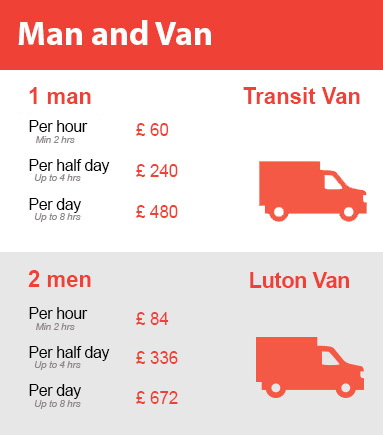Heavy Lifters' Guide to Independence: Moving Big Objects by Yourself
Posted on 30/05/2025
Heavy Lifters' Guide to Independence: Moving Big Objects by Yourself
Are you facing the daunting task of moving heavy objects without help? Whether you're relocating large furniture, shifting gym equipment, or working on a renovation project, the process of moving big items alone can seem overwhelming. But fear not--this comprehensive guide is dedicated to empowering you with the essential strategies, tips, and safety knowledge for moving heavy objects by yourself like a true heavy lifter. Regain your independence, save money, and tackle challenging moves with confidence!
Why Learn to Move Heavy Items Solo?
Independence is empowering. Learning how to move bulky items without help means:
- Flexibility - No need to wait for friends or professional movers.
- Cost Savings - Avoid expensive moving companies for one-off tasks.
- Peace of Mind - Know your items will be handled with care by the person who values them most--you!
- Skill Development - Boost your problem-solving and physical skills.
Let's break down the essential techniques, strategies, and safety steps for you to become an independent heavy-lifter and perform challenging moves without assistance.

Preparation: The Foundation of a Successful Solo Move
Assess the Object
Before attempting to move any heavy object alone, start with a thorough assessment:
- Weight and Size - Is the item within your lifting capability? If not, consider disassembling or using aids.
- Material - Fragile materials require special care.
- Shape and Balance - Irregular or top-heavy items might tip over or be difficult to grip.
Evaluate the Path
Walk through the intended route:
- Clear Obstacles - Remove rugs, clutter, and furniture.
- Measure Doorways - Ensure the object can pass through all areas.
- Stairs and Elevations - Take extra precautions when dealing with steps.
Gather the Right Tools
Using the appropriate equipment can make moving heavy objects by yourself safer and more efficient:
- Dollies and Hand Trucks - Ideal for moving appliances, boxes, and furniture.
- Lifting Straps and Harnesses - Distribute weight, allowing for ergonomic lifting.
- Gloves with Grip - Protect hands and improve control.
- Sliders or Gliders - Reduce friction for heavy furniture on hard floors or carpet.
- Moving Blankets and Wraps - Prevent scratches or damage.
Tip: Investing in quality moving aids not only saves your back but ensures your valuables make the journey unscathed.
Safety First: Avoid Injury While Moving Heavy Objects Alone
Protecting your body is the top priority when you attempt to move big items by yourself.
Warm Up and Stretch
Like any strenuous activity, moving heavy objects engages major muscle groups. Take 5-10 minutes to:
- Stretch your arms, legs, back, and shoulders.
- Perform gentle warm-ups such as squats or brisk walking.
Use Proper Lifting Technique
- Bend at your knees, not your waist.
- Keep your back straight and your head up.
- Hold the object close to your body.
- Lift with your legs, not your back.
- Avoid twisting--pivot with your feet instead.
Know Your Limits
Never attempt to move an item that is too heavy for you. If needed, break down the object, lighten the load, or use mechanical aids. Independence doesn't mean risking your health!
Smart Strategies: Techniques for Solo Lifting and Moving
1. The Art of Pushing and Pulling
Whenever possible, push instead of lift--it's safer and requires less effort.
- Use furniture sliders or moving pads under the item to reduce friction.
- Apply steady and even pressure and push with your legs.
- Avoid jerking or rapid movements to prevent loss of control.
2. Leveraging Tools: The Power of a Dolly
- Tilt the item onto a hand truck or dolly securely.
- Use straps to hold it in place.
- Guide the dolly slowly, especially through tight turns or doorways.
Dollies are essential for moving home appliances, stacks of boxes, safes, and large office equipment with minimal effort and maximum safety.
3. Moving Up or Down Stairs
This is where strategy matters most:
- Use a stair-climbing dolly if possible.
- If using a standard dolly, go slow--step-by-step, keeping the load balanced.
- Clear and well-lit stairways are vital.
- For extra-heavy loads, consider ramps (many home improvement stores offer temporary ramp rentals).
4. The Blanket Slide
If you lack sliders, a thick moving blanket works wonders on hardwood or tile floors:
- Tilt the object slightly and tuck the blanket underneath.
- Pull or push the blanket gently, minimizing friction and avoiding floor scratches.
5. Disassembling Large Objects
Often, you can't (and shouldn't) move certain objects--like large bed frames, bookshelves, or desks--in one piece:
- Remove shelves, drawers, and other detachable parts.
- Label and securely bag all fasteners and hardware for easy reassembly.
- Reducing weight makes both lifting and maneuvering feasible for one person.
Room-By-Room Guide to Moving Heavy Items By Yourself
Living Room
- Sofas and Armchairs: Use sliders under each leg; push gently rather than drag.
- Coffee Tables: Remove glass tops for easier handling.
- Entertainment Centers: Empty all contents to reduce load before moving.
Bedroom
- Mattresses: Most are awkward, not overly heavy; use mattress bags with handles for easier grip.
- Dressers: Remove drawers and carry separately.
- Beds: Disassemble frames and headboards whenever possible.
Kitchen
- Refrigerators: Empty, defrost, and secure doors before moving (use a dolly).
- Ranges and Dishwashers: Disconnect utilities before lifting; use appliances dollies with belts.
- Cabinets: Remove doors for easier maneuvering through doorways and halls.
Garage & Outdoors
- Tool Chests: Take out removable drawers and tools; secure any loose items.
- Outdoor Grills: Clean and detach propane tanks; wheels make for easier solo moves.
- Patio Furniture: Stack and move individual parts, or use a hand truck if possible.
Advanced Tips and Tricks for Solo Heavy Lifters
- Plan Your Route: Walk through your moving path before lifting anything, identifying pinch points, tricky corners, or doorways.
- Utilize Leverage: Use crowbars or other leverage tools to pry up heavy objects slightly and get sliders underneath.
- Leverage Gravity: When moving downstairs, brace items against the stairs and use controlled sliding, not lifting.
- Take Breaks: Heavy work can be exhausting--rest as needed to maintain peak control and focus.
- Reassemble Items in Place: Don't reattach shelves, drawers, or other elements until the item is exactly where it belongs.
Special Considerations: When to Call for Help
Not all objects should be moved alone. Be realistic about your limits! Always seek help or hire professionals if:
- The item's weight or geometry is unmanageable for one person.
- There's a high risk of injury or damage to property.
- Specialized skills or equipment (piano moving, fragile antiques, pool tables) are required.
Safely Transporting Heavy Objects in Vehicles
Once you've maneuvered your heavy item out the door, ensure safe transportation:
- Use ramps for loading into trucks or vans.
- Secure every item with ratchet straps, ropes, or bungee cords--loose cargo can become hazardous during transit.
- Distribute weight evenly to avoid tipping or shifting.
Post-Move Care: Avoiding Damage and Injury
Once the big move is done:
- Inspect for Damage: Check both the item and your home (walls, floors, doors) for any scuffs or dings.
- Reward Yourself: Rehydrate, rest, and stretch post-move to prevent muscle soreness.
- Clean Up: Remove all moving aids, blankets, and wrappers and restore your environment to its pre-move state.

Heavy Lifter's FAQ: Your Top Questions Answered
Q: What is the safest way to lift heavy items alone?
A: Employ ergonomic lifting techniques, use tools like dollies or sliders, and never rush. If an object feels like "too much," it probably is--stop and reassess.
Q: Is it possible to move a refrigerator by myself?
A: Yes, with an appliance dolly, straps, and by ensuring the fridge is empty and defrosted. Take it slow, use ramps for stairs, and never tip it more than 45 degrees to avoid damaging the compressor.
Q: Can I move large items upstairs without a helper?
A: It's trickier, but with a stair climbing dolly, careful planning, and patience, you can. If there's any doubt of your control or safety, get assistance.
Conclusion: Independence Achieved
Learning how to move heavy objects by yourself is about more than strength--it's about preparation, the right tools, and safe, smart techniques. By carefully assessing each object, using specialized equipment, protecting your body, and knowing your limits, you can conquer most solo moving projects safely and efficiently.
Embrace your independence as a heavy lifter and transform challenging moves from a test of willpower into a personal victory!
Remember: The right knowledge, attitude, and equipment make all the difference between a successful independent move and an avoidable accident. Now, grab those straps--and lift smarter, not harder!
Happy lifting!





